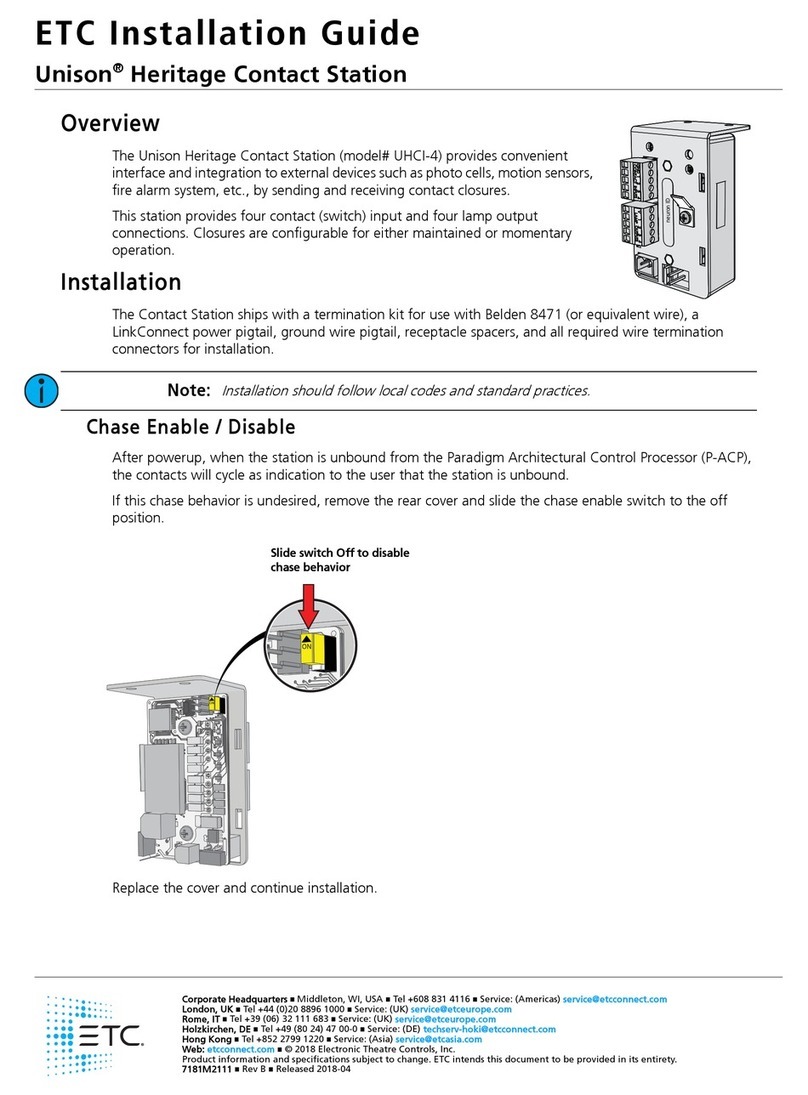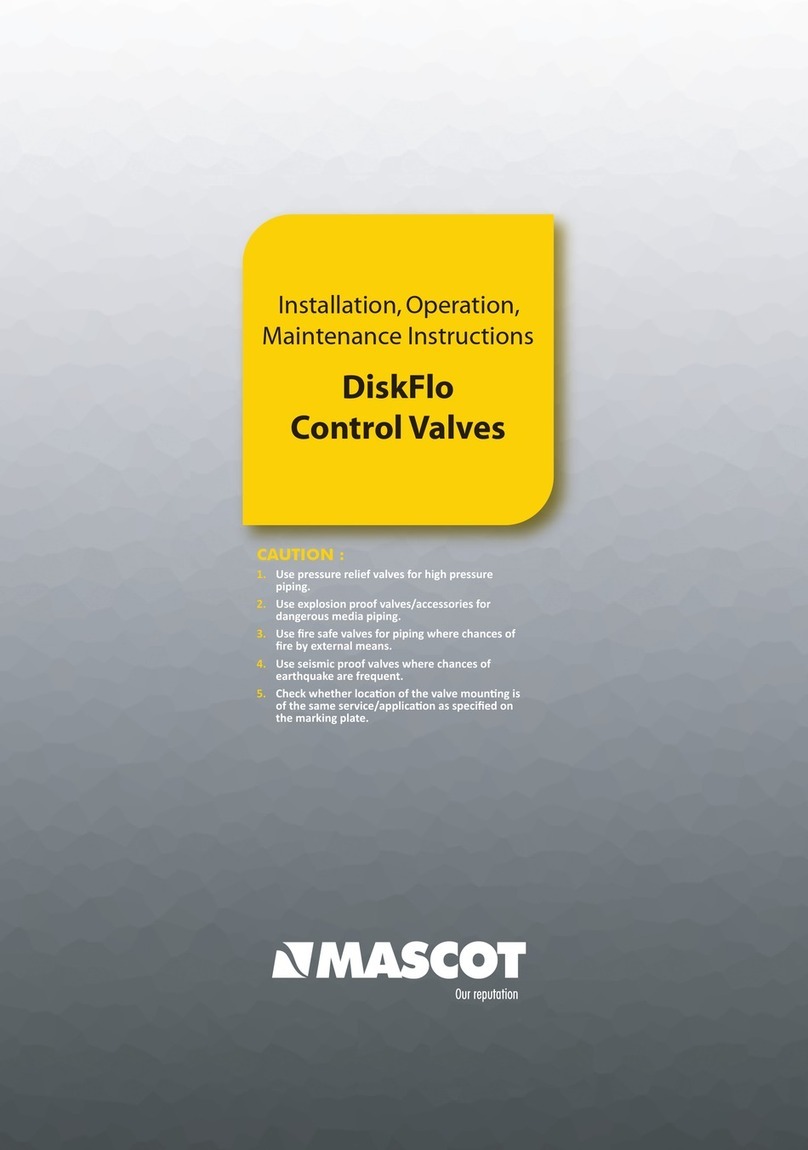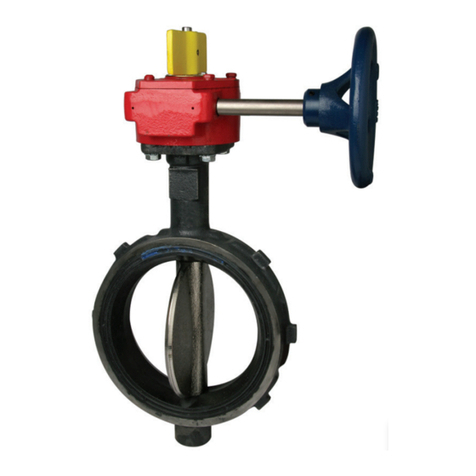MessKonzept FTC320-OEM User manual

FTC320-OEM

File name: 1.09KD221202EMAV01
Thank you for using the Messkonzept FTC320-OEM. It has been designed and manufactured
using highest quality standards to give you trouble-free and accurate measurements.
©Copyright Messkonzept GmbH 2022.
This document is protected by copyright. Neither the whole nor any part of it or the information
contained in it may be adapted or reproduced in any form except with the prior written approval
of Messkonzept.
All information of technical nature and particulars of the product and its use (including the in-
formation in this manual) are given by Messkonzept in good faith. However, it is acknowledged
that there may be errors or omissions in this manual. Images and drawings may not be in scale.
For the latest revisions to this manual contact Messkonzept or visit www.messkonzept.de
Messkonzept welcomes comments and suggestions relating to the product and this manual.
Please Note!
The design of this instrument is subject to continuous development and improvement. Conse-
quently, this instrument may incorporate minor changes in detail from information contained
in this manual.
Important!
In correspondence concerning this instrument, please specify the type number and serial number
as given on the type label on the right side of the instrument.
All correspondence should be addressed to:
Messkonzept GmbH
Niedwiesenstr. 33
60431 Frankfurt
Germany
Tel: +49(0)69 53056444
Fax: +49(0) 69 53056445
E-mail: [email protected]
Website: www.messkonzept.de
This manual applies to: FTC320-OEM
2

File name: 1.09KD221202EMAV01
Contents
I Operator Safety 4
1 Notes on Safety Conventions and Icons 4
2 Warning Notices 4
3 Safety Instructions 5
4 Intended Use 5
II Principle of Measurement 6
1 Determining Concentrations via Thermal Conductivity 6
2 FTC320-OEM Detector Unit 8
2.1 Description..................................... 8
2.2 EMC........................................ 9
III Assembly of the Instrument 9
1 Mounting 9
2 Pneumatic Connection 9
3 Electrical Connection 10
IV Output of the Instrument 11
V Communication with FTC320-OEM 11
1 Remote Control via Serial Communication 12
2 SetApp 3.0 12
VI Specifications 13
VII Scope of Delivery 13
VIII Drawings 14
3

File name: 1.09KD221202EMAV01
Part I
Operator Safety
This section provides information and warnings which must be followed to ensure safe operation
and retain the instrument in safe condition. Read this section carefully before installing and
using the software.
1 Notes on Safety Conventions and Icons
Warning!
”Warning” draws attention to application errors or actions that can lead to safety
risks, including injury to persons or malfunctions - possibly even destruction of the
device.
Note!
”Note” indicates an additional function or hint.
2 Warning Notices
Warning!
•The manufacturer does not assume liability for inappropriate handling of the
device. Malfunctions caused by inappropriate handling may lead to hazards.
•This device is not suited for the operation in areas exposed to explosion
hazards!
•Never lead explosive gases or gas mixtures into the device!
•Warranty expires if any element of the device is removed or replaced without
the consultation of Messkonzept.
•The unit and the cables must be effectively protected against damage and
UV light.
4

File name: 1.09KD221202EMAV01
3 Safety Instructions
Warning!
•For the safe operation of the device, please pay regard to all instructions and
warnings in this manual.
•Only put the device into operation after it has been installed properly. A
competent and authorized person is required for installation, connection and
operation of the device. Please read and follow this manual for the installation.
•Defective devices must be disconnected from the process! This applies for
apparent damages of the device, such as physical damages, but also in the
case of unclarified malfunctions in the operation. Separate the device from
the process pneumatically (both gas inlet and gas outlet) and remove the
power supply from the device.
•Make sure that the electric installation protection against accidental contact
adheres to the applicable safety regulations. The device must be connected
to protective earth before all other connections. Any interruption in the
protective earth connection can cause danger.
•Repairs should only be carried out by Messkonzept.
4 Intended Use
The FTC-series of gas analyzers offer high-precision measurement and detection of non-
corrosive, dust-, condensate-, aerosol and oil mist-free gases 1. Explosive gases may not
be lead into the FTC. The Instrument may not be used in hazardous areas. Please contact
info@messkonzept.de for detailed information and solutions.
Upon installation, the protection class has to be considered. The ambient atmosphere should
not be corrosive. OEM-devices with protection class IP00 demand thermal and electric insula-
tion, as well as mechanical protection for operation.
FTC-series gas analyzers do not have a metrology marking in the sense of EU directive
2014/32/EU. They can, therefore, not be used in e.g. medical or pharmaceutical labora-
tory analyses or in the manufacture of pharmaceuticals in pharmacies based on a doctor’s
prescription.
The specifications of the device and its manual have to be observed strictly. Please fill out
questionnaire (2.01.1FB180619MPL1) for registration of your measuring task, if your intended
use does not comply with intended use described above. Based on the information given in
the questionnaire Messkonzept will examine the measuring task and possibly authorize it.
Note: Please keep this manual for future use.
1Messkonzept also offers, upon request, other models of the FTC-series analyzers that can monitor, addition-
ally to the aforementioned, flammable or explosive gases. For more information in this regard, do not hesitate
to contact us.
5

File name: 1.09KD221202EMAV01
Part II
Principle of Measurement
1 Determining Concentrations via Thermal Conductivity
Thermal Conductivity Detectors (TCD) have been used in the chemical industry since the
1920s as the first process gas analyzers for the quantitative composition of gas mixtures.
Every gas has a unique heat conductivity that is governed by its molar mass and viscosity.
The measurement is based on the principle that the thermal conductivity of a gas mixture is
dependent on the thermal conductivity of its gas components and their fractional amounts
in the mixture. Thus, the concentrations of different components of a gas mixture can be
calculated from the thermal conductivity.
The main advantage of the TCD’s measurement principle compared with the wide spread
infrared analysis technique is that it is not limited to gases with a permanent dipole moment.
It can identify noble gases (He, Ar, Ne, etc.) as well as homonuclear gases such as H2
and N2. Furthermore, it is robust and cost effective. The principle of thermal conductivity
measurement works best if the analyzed gas components’ thermal conductivity vary greatly.
For TC measurement based analysis, one of the following conditions must be met:
•The mixture contains only two different gases (binary mixture), e.g. CO2in N2or
H2in N2
•The thermal conductivity of two or more components is similar but different than that
of the measuring gas, e.g. measuring H2or He in a mixture of O2and N2(quasi binary
mixture)
•The mixture contains more than two gases and the volumetric fractions of all but two
components (or component groups) are constant over time
•The mixture contains more than two gases, of which all but two components’ concen-
trations can be determined through other measurement principles (as employed in the
FTC400 through cross-sensitivity compensation of IR- and TC-sensor information)
The thermal conductivity of gases rises with temperature and the slope of the
increase with temperature is different for different gases. Upon request, it can be
checked whether the temperature of heat sink and/or source should be changed in
order to improve the accuracy or to avoid cross-sensitivity effects.
Cross-sensitivity is the sensitivity of the measurement on other gases than the
measured component.
The FTC320-OEM contains a TC sensor that analyzes the quantitative composition of gas
mixtures. The measurement is based on the heat transfer between a heat source and a heat
6

File name: 1.09KD221202EMAV01
Figure 1: Schematic drawing of thermal conductivity measurement. The sensor is mounted in
the stainless steel block that is kept at a constant temperature.
sink.
The measuring gas is led through a stainless steel block that is kept at a constant temperature of
63◦C (for most applications). The block temperature is stabilized using a control loop - it serves
as a heat sink of constant temperature. A micro mechanically manufactured membrane with
a thin-film resistor serves as heat source. A control loop stabilizes the membrane temperature
at 135◦C (for most applications).
Above and below the membrane two small cavities are etched into the silicon. These cavities
are filled with measuring gas by diffusion. The surfaces opposite to the membrane are thermally
connected with the heat sink. Through maintaining a constant temperature gradient between
the two opposite surfaces, the heat flow is dependent of the gas mixture’s thermal conductivity
alone. Hence the voltage needed to keep the membrane temperature constant is a reliable
measure for the thermal conductivity of the mixture and can be used further to determine the
gas mixture’s composition.
“Basic range“ is the largest possible measuring range and is set by default. The
linearization is performed over the basic range. The smallest measuring ranges
at the beginning and the end of the basic range are facilitated through specific
calibration. They can be estimated by linear Interpolation.
Table 1 lists typical gas pairs and their measuring ranges.
7

File name: 1.09KD221202EMAV01
Measuring Gas Carrier Gas Basic range Smallest range Smallest suppressed zero range
H2 He 20% - 100% 20% - 40% 85% - 100%
H2 CH4 0% - 100% 0% - 0.5% 98% - 100%
H2 N2 or air 0% - 100% 0% - 0.5% 98% - 100%
H2 Ar 0% - 100% 0% - 0.4% 99% - 100%
H2 CO2 0% - 100% 0% - 0.5% 98% - 100%
He N2 or air 0% - 100% 0% - 0.8% 97% - 100%
He Ar 0% - 100% 0% - 0.5% 98% - 100%
CH4 N2 or air 0% - 100% 0% - 2% 96% - 100%
CH4 Ar 0% - 100% 0% - 1.5% 97% - 100%
O2 N2 0% - 100% 0% - 15% 85% - 100%
O2 Ar 0% - 100% 0% - 2% 97% - 100%
NH3 H2 0% - 100% 0% - 5% 95% - 100%
N2 Ar 0% - 100% 0% - 3% 97% - 100%
N2 CO2 0% - 100% 0% - 4% 96% - 100%
CO H2 0% - 100% 0% - 2% 99% - 100%
Ar N2 or air 0% - 100% 0% - 3% 96% - 100%
Ar CO2 0% - 100% - 80% - 100%
CO2 N2 or air 0% - 100% 0% - 3% 96% - 100%
CO2 Ar 0% - 100% 0% - 10% -
SF6 N2 or air 0% - 100% 0% - 2% 96% - 100%
Table 1: The measuring ranges of typical gas compositions for analysis with the FTC320-OEM.
2 FTC320-OEM Detector Unit
2.1 Description
The FTC320-OEM is a highly precise and stable Thermal Conductivity Detector (TCD) that is
designed for the use as an OEM detector. The unit consists of a hermetically sealed pressure
proof stainless steel block with a gas duct, which is suited for pressures up to 20 bar. Sample
gas entering through the gas inlet is guided to the micro-mechanical thermal conductivity
sensor and further downstream to the outlet port. In particular the pneumatics are designed to
minimize the influence of a changing gas flow. The operating temperature of 63◦C is stabilized
by a highly accurate PI control loop.
In order to avoid electrical interference on the measuring output, the high performance analog
adaption circuit is directly mounted on top of the stainless steel block. The Processor board
digitizes the signal in a 24bit A/D converter. The micro-controller performs all calculations,
such as linearization, calibrations and cross sensitivity compensation directly on the detector
unit.
For indication of the signal, a 0 to 10V analog output is provided. For internal calibration,
configuration and digital indication of the signal a TTL-level RS232 or USB communication
2is required. For these features and for testing purposes (e.g. plotting and logging the
signals), Messkonzept offers a Microsoft Windows software and/or a terminal program in order
to perform Offset and Gain calibration on a PC. For more information, see part V.
2depends, among others, on the place and way of installing the device
8

File name: 1.09KD221202EMAV01
2.2 EMC
The product FTC320-OEM does not meet EMC (Electromagnetic Compatibility) requirements,
since the device is not shielded. Proper shielding and ingress protection (IP) might be required.
Part III
Assembly of the Instrument
1 Mounting
Warning!
The FTC320-OEM unit must be thermally isolated from the environment!
The bottom view of the FTC320-OEM shows four M3 thread holes which can be used for
the fixation of the detector (see Figure 2). Use insulating spacers (min. 4mm) and stainless-
steel screws in order to minimize heat flow from the 60°C hot detector body. For water-tight
bulkhead mounting, two spacer and two M8 nuts are available upon request.
Figure 2: Dimensions of the FTC320-OEM. The M3 thread holes on the back of the detector
are shown in the illustration on the left.
2 Pneumatic Connection
For the pneumatic connection, it is important to know the direction of the gas flow, i.e.
differentiate between the gas inlet and outlet. Looking at the FTC320-OEM with the electronic
boards facing upwards, the gas inlet is on the right-hand side (see figure 3).
9

File name: 1.09KD221202EMAV01
Gas inlet and outlet tubes - as well as the body - are stainless steel (1.4571/1.4404). The
outer diameters of the tubes are 6mm. The inner gas duct is heated up to 63°C (versions with
higher temperatures available on demand). In case condensation may occur in the sample gas
lines and connections at ambient temperatures, heated lines and connections must be used in
order to avoid condensation. With proper heated lines and connections, a dew point up to
50°C is permissible.
Figure 3: The gas in- and outlet of the FTC320-OEM.
Warning!
The gas led into the device cannot contain any dust, condensate and potentially
condensing matter unless the FTC unit equipped with a filter membrane protecting
against condensate and dust. Liquid droplets or dust will immediately destroy the
sensor element upon contact. If your gas sample may not be dust-, condensate-
or corrosion-free, please state this in your request and we will provide you with a
suitable FTC320-OEM unit.
3 Electrical Connection
Figure 4 illustrates the available electrical connections of the FTC320-OEM.
10

File name: 1.09KD221202EMAV01
A = positive signal of RS-485.
B = Negative signal of RS-485.
RS-485 is used for multipoint connection and Modbus.
GND = digital ground.
RXD = Receive data (3.3V TTL-level) into the FTC320-OEM.
RXD = Transmit data (3.3V TTL-level) output of FTC320-OEM.
AGND = Analog ground connected to chassis ground.
Aout1 = Analog signal output number 1 (0 to 10V).
AGND = Analog ground connected to chassis ground.
Aout2 = Analog signal output number 2 (0 to 10 V).
+24V = Positive input from DC power supply.
Power supply range: min. 18V – max. 30V, 24V recommended.
GND = Ground for negative input from power supply.
Maximum DC current consumption = 700mA.
Jumper for adding 120 Ohm terminating
resistor when is end device in RS-485 Bus.
Figure 4: The electrical connections to and from the FTC320-OEM.
Part IV
Output of the Instrument
The gas concentration is mapped onto the voltage output of the device. The mapping can be
freely chosen, with the maximum possible voltage being 10 Volt. The recommended span of the
voltage output is 1V-9V, so that minor outside influences like pressure- and flow fluctuations
or minor drifts will not cause the signal to exceed the span of 0V-10V.
Here is an example of a typical mapping of voltage to gas concentration: assume the measuring
range is 10-100 Vol.% and the voltage output is set to 1V-9V. The gas percental concentration
can, then, be calculated from the voltage output with the following formula:
Gas Concentration (Analog Output) =Analog Output −1V
9V−1V
·(100 Vol. % −10 Vol.%)(1)
11

File name: 1.09KD221202EMAV01
Part V
Communication with FTC320-OEM
1 Remote Control via Serial Communication
The FTC320-OEM is equipped with an RS232-Low-Voltage-TTL (LVTTL)-interface (see Fig-
ure 5). Low-voltage TTL (LVTTL) is a special form of transistor-transistor logic (logic family)
in which the supply voltage is reduced from 5 V to 3.3 V3. In addition, an RS485 connection
that is used for Modbus communication will be soon offered by Messkonzept.
A dedicated manual for explaining the remote control is available and can be provided upon
request. Please contact Messkonzept if you wish to get a copy of the manual.
Figure 5: Connecting the Low-voltage TTL (LVTTL) with the board.
2 SetApp 3.0
Starting in February 2023, Messkonzept will offer a software for the operation of the FTC320
series. It enables monitoring of measured values and adjusting the settings of the FTC devices.
This is especially important for the OEM series, since SetApp3.0 will make processes such as
calibration, setting thresholds, and routing measurements to the analog outputs, among many
others, much easier. The SetApp3.0 will be available for download in April, 2023 on our website
in the Download section.
3When choosing a LVTTL adapter, please make sure that it is compatible with Windows 10 and/or 11.
12

File name: 1.09KD221202EMAV01
Part VI
Specifications
Dimensions with connectors L=74mm, W=65.9mm, H=44.5mm
Weight 326g
Power supply 21-30V, recommended: 24V, max. 0.8A
RS232 - Baudrate / Data 19.2 kBaud/s, 8N1
RS485 (Modbus RTU) Default: 19.2 kBaud/s, 8N1 (1.2 - 115.2 kBaud/s configurable)
Ambient temperature range As high as 50°C, and as low as -20°C with proper insulation
Linearity <1% of range
Warm up time Approx. 20min; 1h for small ranges
Flow rate Normal flow: 60 l/h, low flow: 15-30 l/h
T90-time <1sec (at proper flow rate)
Noise <1% of smallest range
Drift at zero point <2% of smallest range per week
Repeatability <1% of range
Error due to change of ambient temperature <1% of smallest range per 10°C
Error due to change of flow at 80l/h <1% of smallest range per 10l/h
Gas pressure (absolute) 80kPa (0.8 bar) to 2000kPa (20bar)4
Error due to change of pressure (above 800hPa) <1% of smallest range per 10hPa
Table 2: Specifications of the TC-analyzer FTC320-OEM. The values given above refer to H2
in N2, they may vary for other gas pairs.
Part VII
Scope of Delivery
•FTC320-OEM TC-Detector.
•Optional: RS232-TTL-converter and PC tools for calibration.
4Messkonzept also offers devices with higher pressure tolerance upon request.
13

File name: 1.09KD221202EMAV01
Part VIII
Drawings
Figure 6: 3D-model of the FTC320-OEM from the upper left side.
Figure 7: 3D-model of the FTC320-OEM from the bottom left side.
14

Table of contents
Popular Control Unit manuals by other brands
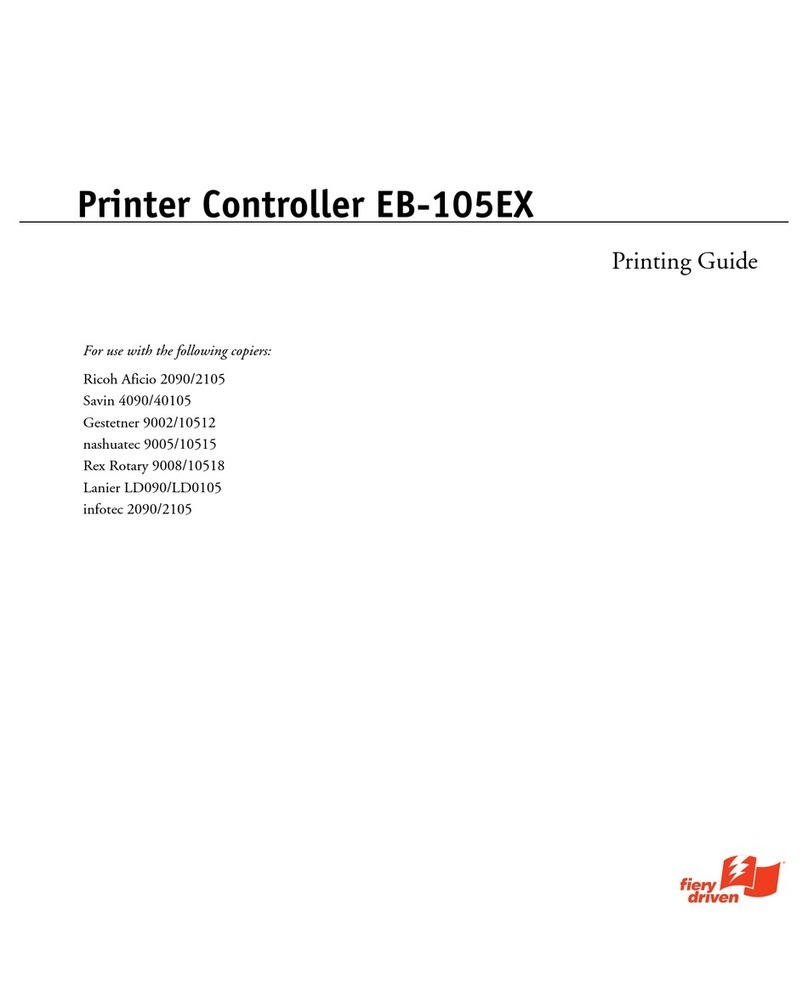
Ricoh
Ricoh 411402 - EFI Fiery EB-105EX Controller printing guide
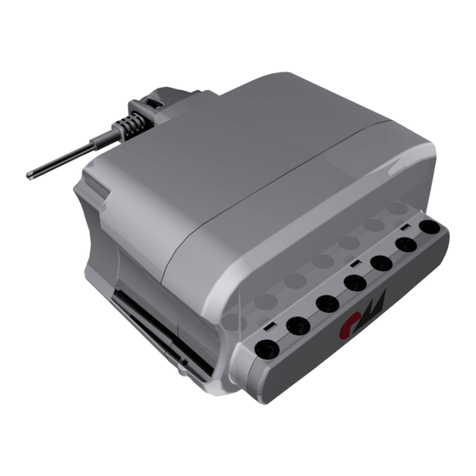
Phoenix Mecano
Phoenix Mecano DewertOkin MC11 installation instructions
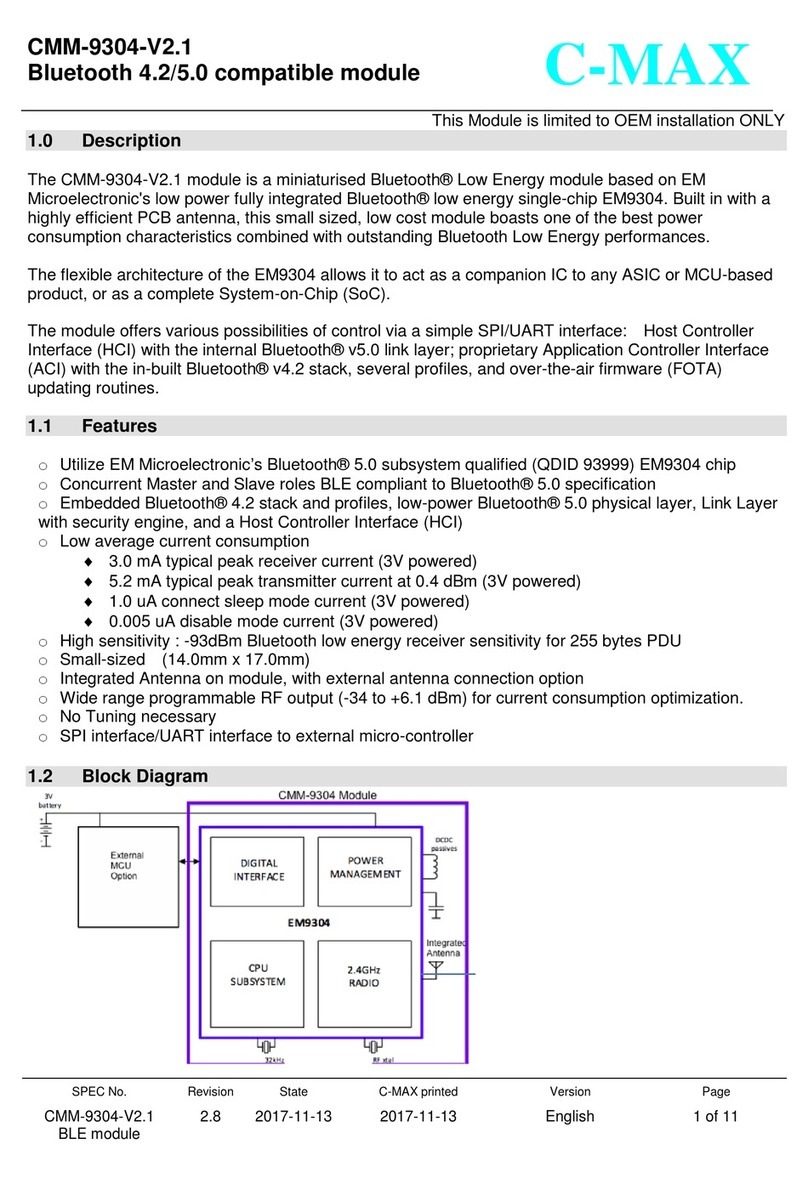
C-Max
C-Max CMM-9304-V2.1 manual
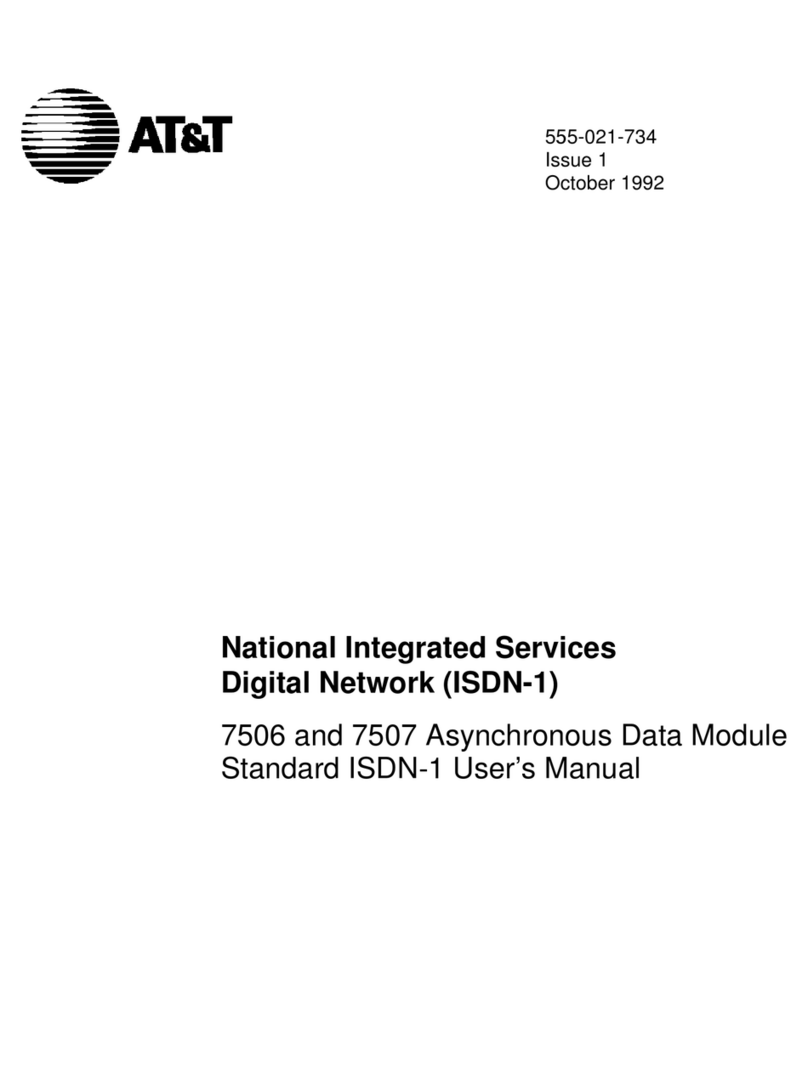
AT&T
AT&T 7506 user manual
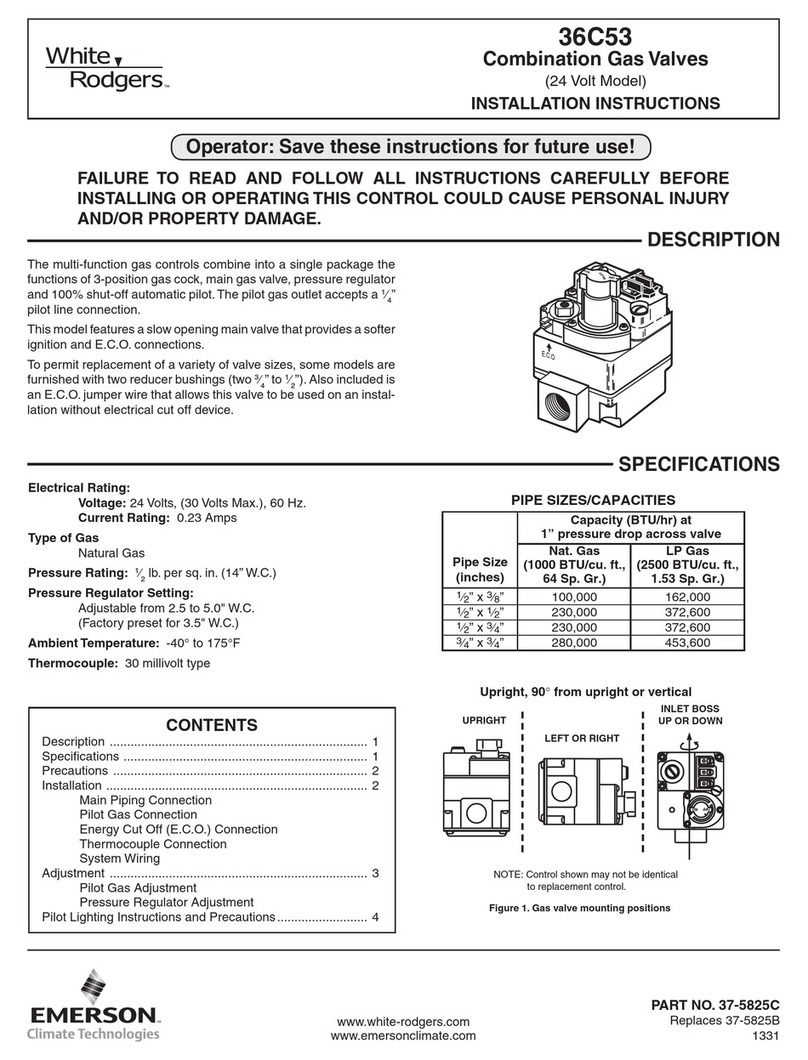
Emerson
Emerson White Rodgers 36C53 Series installation instructions
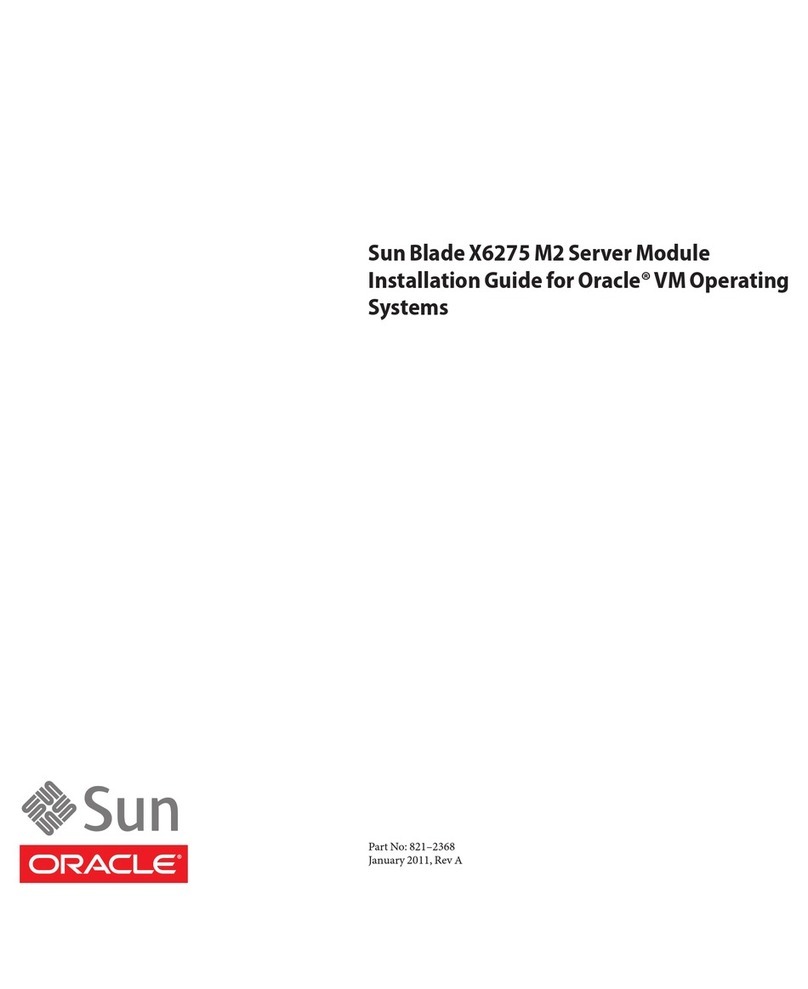
Sun Oracle
Sun Oracle Sun Blade X6275 M2 installation guide

Vortice
Vortice NA 100 Instruction booklet
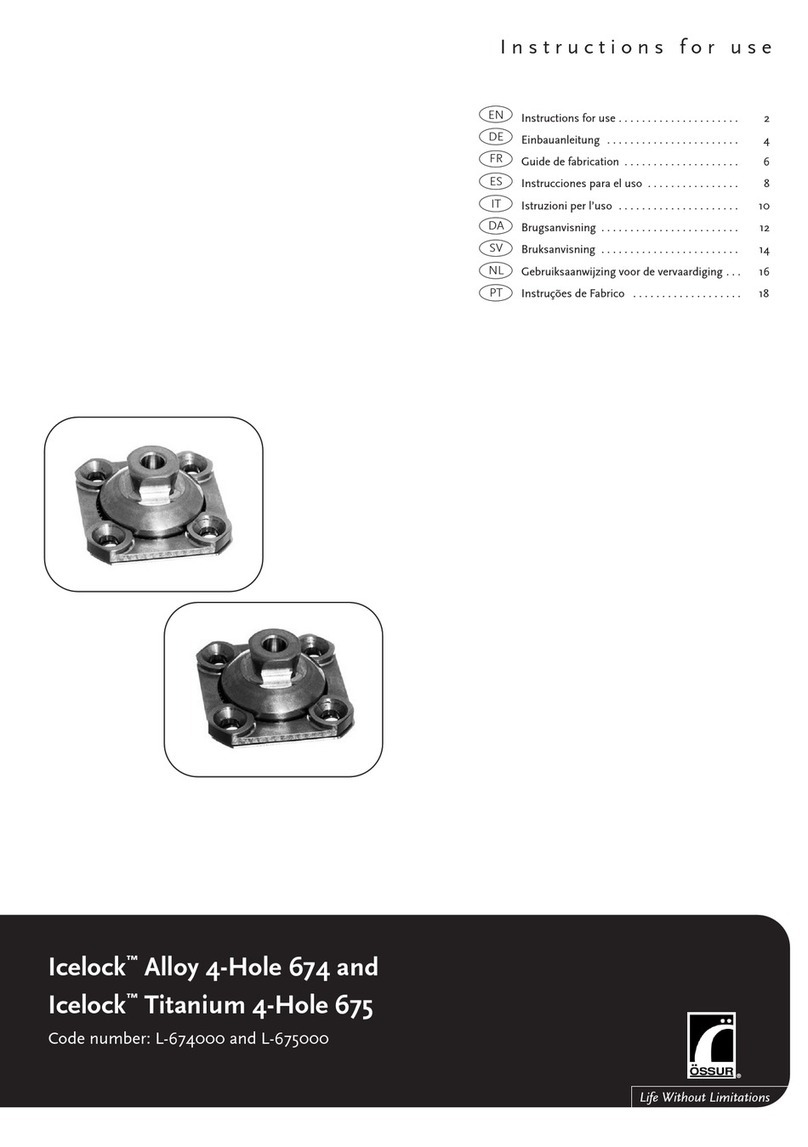
Ossur
Ossur Icelock Alloy 4-Hole 674 Instructions for use
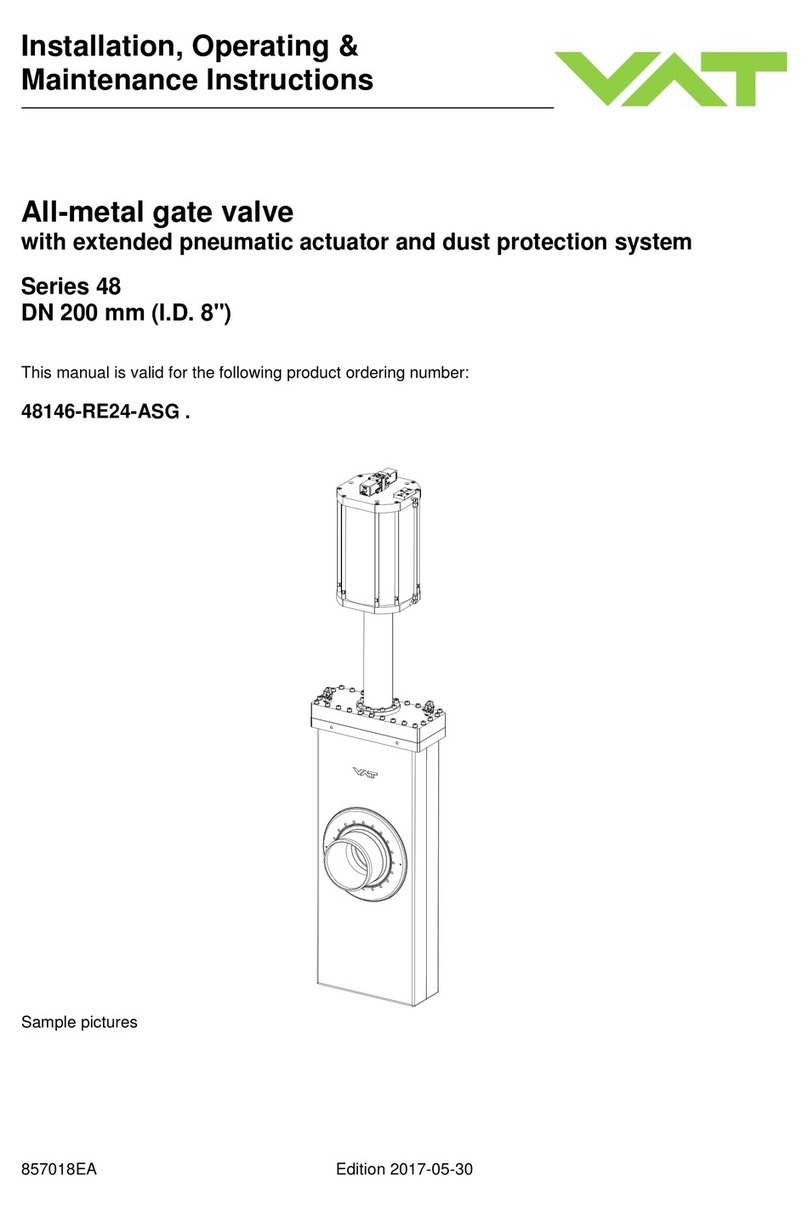
VAT
VAT 48 Series Installation, operating, & maintenance instructions
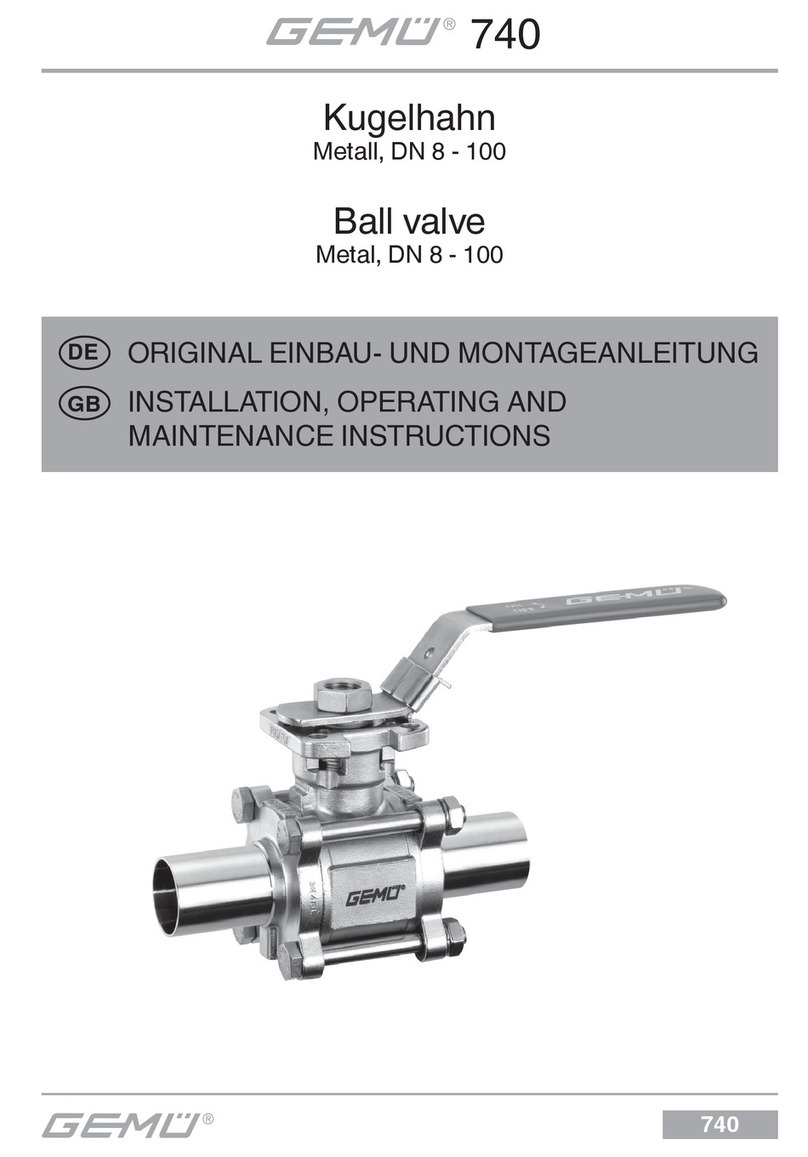
GEM
GEM 740 Installation, operating and maintenance instructions
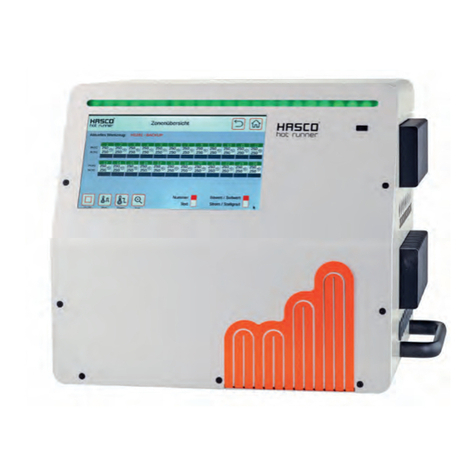
Hasco
Hasco H1281-6 operating instructions
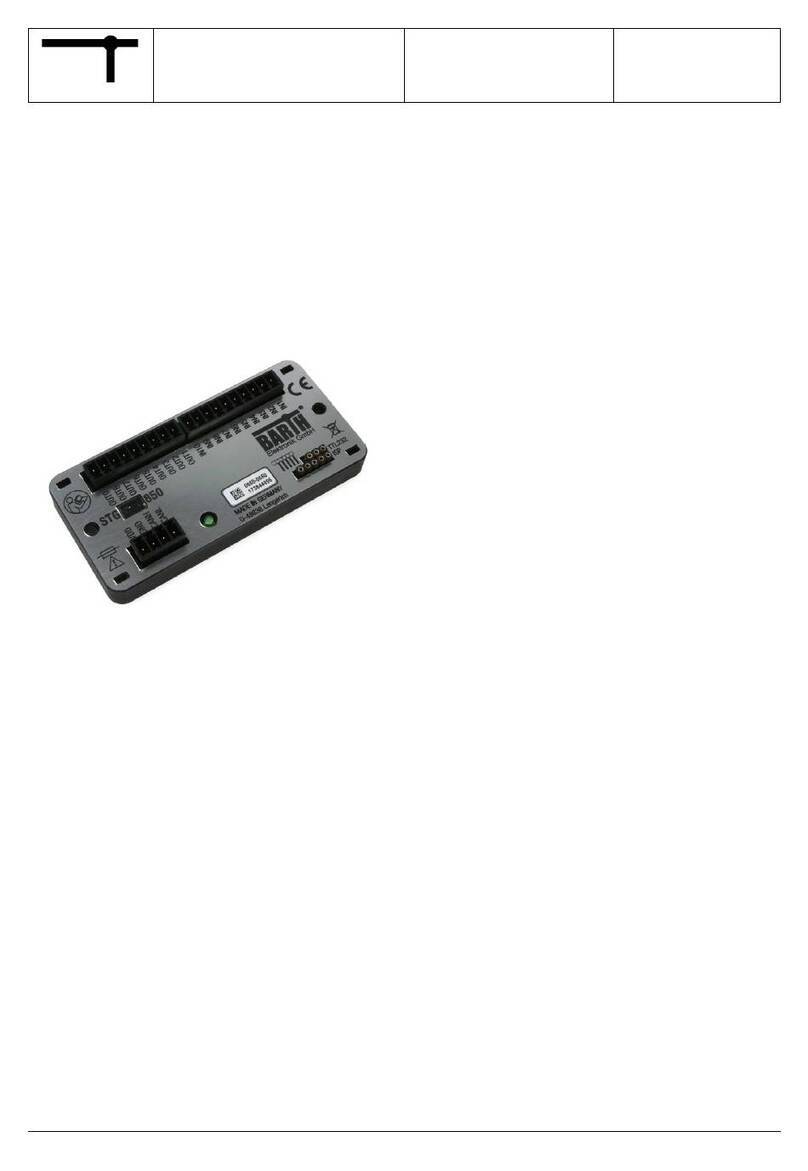
Barth
Barth Mini-PLC STG-850 manual
